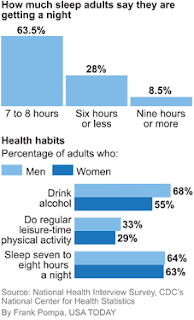Business Week
Gov. Beverly Perdue said Wednesday that North Carolina can recover tens of millions dollars annually by shifting more Medicaid investigations from file cabinets to computer files that can be flagged for potential abuse and fraud in the state's $10 billion system.
Perdue rolled out the state's latest effort to target patients or physicians who are gaming the system.
The program will run Medicaid claims through a contractor's software program, crunching raw electronic billing and other data to identify suspicious trends among the nearly 2 million Medicaid patients and 60,000 Medicaid providers in the state. Medicaid investigations have historically relied on paper documents and workers had trouble analyzing such data, according to the Department of Health and Human Services.
Other anti-fraud efforts, some using another computer program, have shown some success.
The pressure to locate additional dollars in Medicaid insurance is growing as state revenues stagnate and the state's portion of the program is on track to cost $250 million more than budgeted this year. Medicaid is the federal-state government insurance program for low-income families and senior citizens, as well as people with disabilities.
"There are better ways to do it in 2010," Perdue said in a news conference held in a catherization lab at Rex Hospital in Raleigh real estate. "This system has the capacity to identify potential fraud, waste and abuse and we're doing it with the speed and efficiency that we never thought was possible before."
Perdue also wants to double the size of Attorney General Roy Cooper's anti-fraud unit, so it can prosecute more lawbreakers, and she wants tougher laws to discourage fraud among health care providers.
The initial effort won't require a large state investment. The state didn't pay IBM Corp. for the software program, Health and Human Services Secretary Lanier Cansler said. Instead, the company will get an amount equal to 10 percent of the money that the department determines should be recouped because services were fraudulent or unnecessary, with IBM's total capped at $5.4 million annually.
"It's like fishing," Cansler said. "You fish to find the people who break the rules. We've been fishing with a cane pole. The governor's pushed us to get depth finders, where we can not only locate the school of fish we can also locate the big fish."
The anti-fraud initiative, which should be fully running by early summer, already has found some unusual cases that required further inspection.
Perdue said a program demonstration using 2007 Medicaid documents uncovered one provider that billed the system $45,000 in "miscellaneous" prosthetic limbs. It's also not unusual for some Medicaid patients to go from doctor to doctor to receive services so they can get access to controlled substances, the governor said.
The most extreme cases of potential fraud will be sent to a newly created Medicaid "SWAT" team that will investigate providers or consumers. Cooper's office also could be called in to pursue criminal charges.
"Medicaid fraud hurts our state's most vulnerable residents and robs taxpayers," Cooper said in Perdue's news release. Cooper's Medicaid fraud unit, comprising 19 investigators and State Bureau of Investigations agents, helped recover $52 million last year.
Perdue said she also wants lawmakers to toughen rules to stop kickbacks to health care providers who refer patients to certain Medicaid services and to end the solicitation of patients to obtain unnecessary services. The governor also announced a publicity effort to blow the whistle on potential Medicaid fraud or waste.
Perdue rolled out the state's latest effort to target patients or physicians who are gaming the system.
The program will run Medicaid claims through a contractor's software program, crunching raw electronic billing and other data to identify suspicious trends among the nearly 2 million Medicaid patients and 60,000 Medicaid providers in the state. Medicaid investigations have historically relied on paper documents and workers had trouble analyzing such data, according to the Department of Health and Human Services.
Other anti-fraud efforts, some using another computer program, have shown some success.
The pressure to locate additional dollars in Medicaid insurance is growing as state revenues stagnate and the state's portion of the program is on track to cost $250 million more than budgeted this year. Medicaid is the federal-state government insurance program for low-income families and senior citizens, as well as people with disabilities.
"There are better ways to do it in 2010," Perdue said in a news conference held in a catherization lab at Rex Hospital in Raleigh real estate. "This system has the capacity to identify potential fraud, waste and abuse and we're doing it with the speed and efficiency that we never thought was possible before."
Perdue also wants to double the size of Attorney General Roy Cooper's anti-fraud unit, so it can prosecute more lawbreakers, and she wants tougher laws to discourage fraud among health care providers.
The initial effort won't require a large state investment. The state didn't pay IBM Corp. for the software program, Health and Human Services Secretary Lanier Cansler said. Instead, the company will get an amount equal to 10 percent of the money that the department determines should be recouped because services were fraudulent or unnecessary, with IBM's total capped at $5.4 million annually.
"It's like fishing," Cansler said. "You fish to find the people who break the rules. We've been fishing with a cane pole. The governor's pushed us to get depth finders, where we can not only locate the school of fish we can also locate the big fish."
The anti-fraud initiative, which should be fully running by early summer, already has found some unusual cases that required further inspection.
Perdue said a program demonstration using 2007 Medicaid documents uncovered one provider that billed the system $45,000 in "miscellaneous" prosthetic limbs. It's also not unusual for some Medicaid patients to go from doctor to doctor to receive services so they can get access to controlled substances, the governor said.
The most extreme cases of potential fraud will be sent to a newly created Medicaid "SWAT" team that will investigate providers or consumers. Cooper's office also could be called in to pursue criminal charges.
"Medicaid fraud hurts our state's most vulnerable residents and robs taxpayers," Cooper said in Perdue's news release. Cooper's Medicaid fraud unit, comprising 19 investigators and State Bureau of Investigations agents, helped recover $52 million last year.
Perdue said she also wants lawmakers to toughen rules to stop kickbacks to health care providers who refer patients to certain Medicaid services and to end the solicitation of patients to obtain unnecessary services. The governor also announced a publicity effort to blow the whistle on potential Medicaid fraud or waste.























